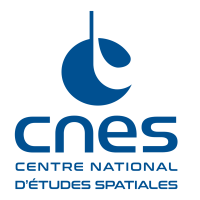Étudier les rayons gamma qui parcourent l’Univers afin d'étudier les propriétés de certains objets astronomiques comme les trous noirs et les supernovæ, tel est l'objectif de la mission Integral (INTErnational Gamma-Ray Astrophysics Laboratory). Lancé en 2002, le satellite Integral est développé par l’ESA, en collaboration avec les États-Unis et la Russie.
Informations essentielles
| Mission | Mission d'astronomie gamma |
|---|---|
| Domaine CNES | Sciences |
| Date de début | Lancement le 17 octobre 2002 |
| Partenaires | ESA, IRAP, CEA, IAP, Universidad de Valencia Edificio de Investigacion, Max Planck Institute for extraterrestrial Physics, IAPS de Rome, Université Catholique de Louvain, Space Sciences Laboratory, University of California San Diego, NASA, IASF-Bologna, IASF-Palermo, University of Tübingen, University of Bergen, SRC de Varsovie, Institut Copernicus de Varsovie |
| Lieu | Orbite de 72 heures à une altitude variant de 9000 à 153 000 km |
| Durée | Durée initiale de 10 ans, prolongée jusqu'au 31 décembre 2024 |
| Statut du projet | En exploitation |
Chiffres clés
-
4 000
kg : masse du satellite
-
4
instruments scientifiques à bord
-
3
keV à 10 MeV : gamme d’énergie des rayons gamma observables
-
5
x 2,8 x 3,2 m : dimensions du satellite
Dates clés
- Fin 2022 : L’ESA prolonge la mission jusqu’en décembre 2024
- Fin 2020 : L’ESA prolonge la mission jusqu’en décembre 2022
- Novembre 2018 : L’ESA prolonge la mission jusqu’en décembre 2020
- Novembre 2016 : L’ESA prolonge la mission jusqu’en décembre 2018
- 19 juin 2013 : L’ESA prolonge la mission jusqu’en décembre 2016
- 19 novembre 2010 : L’ESA prolonge la mission jusqu’en décembre 2014
- 2 octobre 2009 : L’ESA prolonge la mission jusqu’en décembre 2012
- 27 juillet 2006 : L’ESA prolonge la mission jusqu’en décembre 2010
- 17 octobre 2002 : Lancement d’INTEGRAL par Proton
- 9 mai 2001 : Livraison du modèle de vol de l’instrument SPI à Alenia Spazio, Italie
- Juin 1993 : L’ESA sélectionne le projet INTEGRAL dans le programme scientifique Horizon 2000
Le projet en bref
Le 17 octobre 2002, le satellite INTEGRAL a quitté la Terre. Sa mission ? Analyser les rayons gamma cosmiques, ces ondes électromagnétiques 100 000 fois plus énergétiques que la lumière visible qui parcourent l’Univers, notamment émises par les trous noirs et les supernovæ (le phénomène dit de « supernova », qui se produit lorsqu’une étoile explose, se caractérise par une émission lumineuse brève et extraordinairement puissante). Grâce aux données recueillies par le satellite, les astrophysiciens espèrent non seulement mieux comprendre les phénomènes cosmiques qui sont à l'origine de ces rayonnements gamma, mais aussi cartographier les sources d’émission de ces rayonnements dans l'Univers. Pour y parvenir, le satellite INTEGRAL dispose de quatre instruments dont le spectromètre SPI, développé sous maîtrise d’œuvre du CNES.
La mission INTEGRAL, dirigée par l’ESA, est le fruit d’une coopération internationale qui réunit plusieurs pays européens (Allemagne, Belgique, Espagne, France, Italie, Pologne, République tchèque, Royaume-Uni), les Etats-Unis et la Russie. La durée de vie de la mission, initialement fixée à 10 ans, a été prolongée jusqu’en 2024.
Depuis son lancement, INTEGRAL a apporté une contribution importante à la recherche en astrophysique sur les sursauts gamma, la raie d'annihilation électron/positron, la nucléosynthèse, la découverte de nouvelles sources, offrant une nouvelle vision détaillée du ciel gamma.
Rôle du CNES dans le projet
Le spectromètre SPI embarqué sur le satellite INTEGRAL a été développé sous maîtrise d’œuvre du CNES.
Le CNES a été responsable de la mécanique, de la thermique, du logiciel et de la conception électrique en plus de l'élaboration des spécifications de la conception générale, spécifications des exigences des sous-assemblages, des interfaces internes aussi bien qu'externes et du plan d'assurance produit. Il a été responsable de toutes les activités d'intégration au Centre Spatial de Toulouse et de toutes les activités de définition des tests et d'exploitation à Intespace.
Le CNES a eu la charge de la conception et a fait fabriquer pour lui certaines parties du spectromètre (ceci inclut la structure d'interface satellite/spectromètre, le contrôle thermique, le cryostat, le logiciel de vol et le harnais).
Quatre modèles de développement différents, chacun avec différent objectifs, ont été fabriqués. Deux ont été utilisés pour tester et la qualification des interfaces avec le satellite, mais n’ont pas fourni d'informations sur le travail interne de l'instrument. Cet aspect a été clarifié par deux modèles de qualification : le Modèle Structural et Thermique (Structural and Thermal Model : STM) et le Modèle d'Ingénierie (Engineering Model : EM). Le Modèle de Vol lui-même a passé les tests de qualification additionnels nécessaires et les tests acceptation traditionnels. Les cinq modèles ont été intégrés par une équipe CNES dans la salle blanche du Centre Spatial de Toulouse.
Contact CNES
Responsable thématique Astronomie et Astrophysique du CNES
Philippe LAUDET
Courriel : philippe.laudet at cnes.fr


